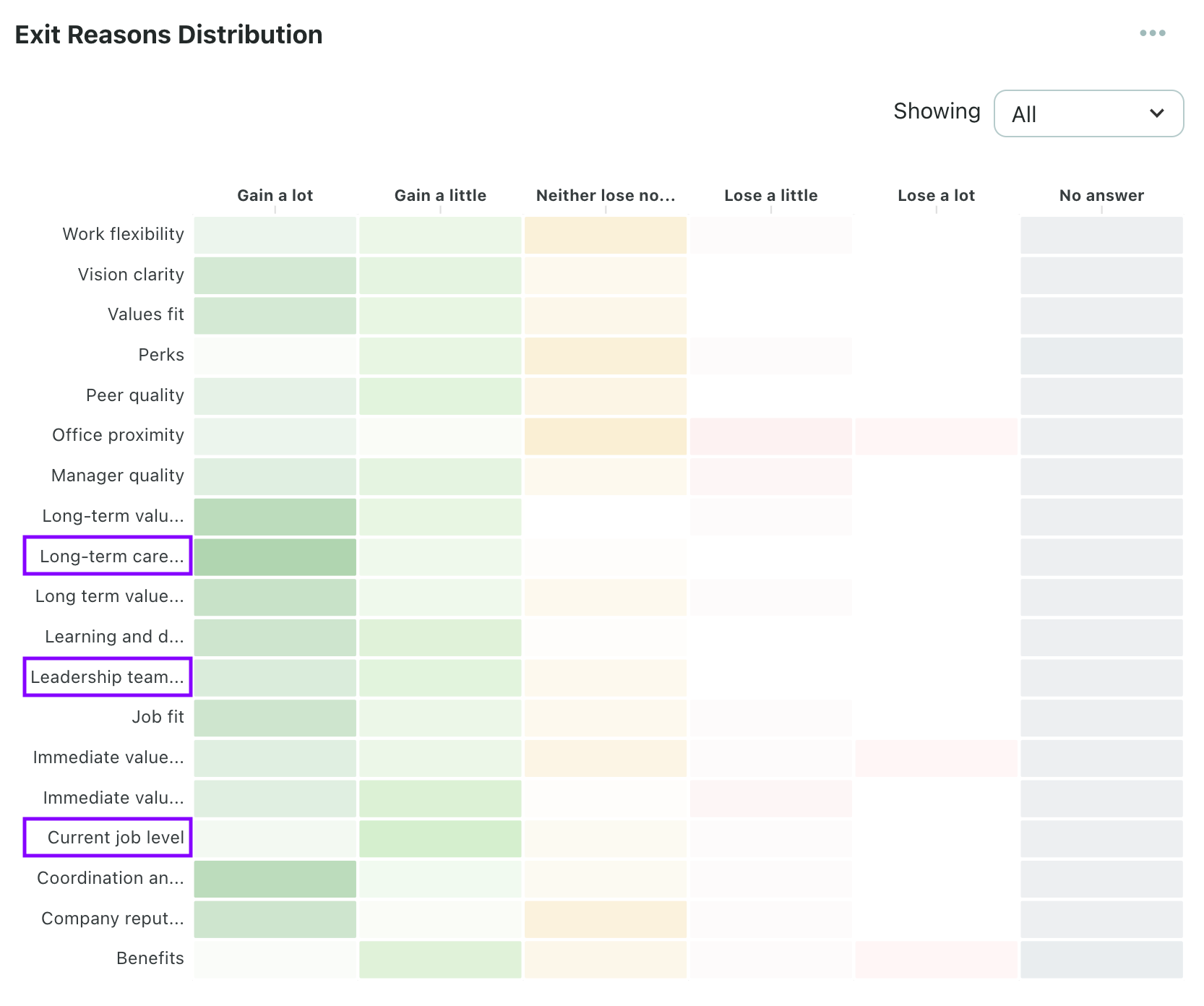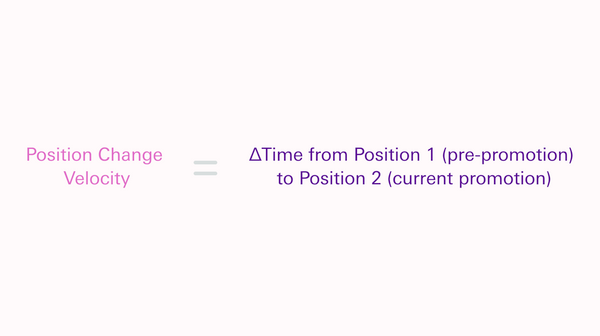Learn how to track the speed at which employees progress upwards at work and how to enable them to achieve mastery.
Mastery, or feeling competent and accomplished, is one of our essential psychological needs. But giving employees the chance to work in an environment that allows them to achieve mastery can be a challenge.
In this post, we look at how to measure whether your workplace gives all employees a chance to advance, what your promotion velocity is, and how you can ensure that your employees have space to progress upwards.
Does your workplace give employees a chance to progress upwards?
Before you start building a work setting that encourages employee progress, you need to understand whether your current workplace gives them a chance to grow.
Knowing how employees perceive their current roles can give you useful pointers to make their trajectory more or less steep, depending on how comfortable they feel about their performance.
To do this, you can look into data gathered through surveys, where analyzing the perception of current tasks and duties, or a job level, helps source a list of aspects to improve.
For example, you can do this in the Orgnostic people analytics platform by running the Exit survey, and then looking at responses for the current job level, development opportunities, and long-term career opportunity:

If employees feel that they would gain more in terms of career development and opportunities if they left their current job, that’s a big cue for you. You need to start rethinking your promotion plans and what you could improve to make the current scope of a job more challenging and growth-oriented.
What’s the right time to promote employees?
You might not have mastery opportunities in all your positions yet, because of some misconceptions.
One is that employees need to be perfect at the next role before getting promoted into it.
Unfortunately, this can block your from meeting your mastery needs, as you wouldn’t be challenged in that new promotion or in the current role.
Instead, employees should be promoted when they still have room to grow in their new role so they aren’t stuck without developing or improving.
This might seem worrisome, but it’s linked to the idea of flow.
You want employees to get into the ‘zone’ when they’re working, so their tasks are more energizing and motivating. The best zone to be in for learning and mastery is the ‘zone of proximal development’.
This is a term used to describe the place between tasks that are too easy and impossible tasks that are demotivating for employees.
If you’re completing everything perfectly at 100% of the ideal worker, this job is too easy for you: you’re not in the right zone. And if you have zero percent of the skills needed to do the job, you’re on the ‘way too difficult’ side of this sweet spot.
How do you calculate promotion velocity?
Promotion velocity, just like any speed-related metric, is about change over time.
In this case, you’re looking for the number of months employees spend until promotion.

With this information, you can look at the spread of time to promotion.
This will show you not just the average time that employees spend at each level, but which employee groups are spending more time at the same position.
For instance, it could be that your technical roles have a slower promotion velocity. This might make sense because of their difficulty, but you should still make sure that employees are being challenged enough after so long in the same position.
How to enable employees to progress upwards
It’s tempting to focus on training, but it is on-the-job learning that is most likely to help employees reach mastery.
This is because learning, as work happens, unlike learning in an in-classroom setting, requires less transferring and is the most relevant to employees. It’s the ideal place to practice and get feedback, which is critical for our mastery needs.
Some leaders may be worried about trusting employees with roles they haven’t perfected yet, but there’s a solution – building an apprenticeship model can help both newer and more masterful employees. This idea builds mastery for both the teacher and the learner, while reducing risk for the company by having an experienced employee around to address any problems.
When done for the right reasons, promotions are a proxy for growth, mastery, and learning. This means if your employees are progressing very slowly, they might not be meeting their mastery needs.
Once you know how fast your employees progress, here is what you can do to support their growth:
1) Run Exit surveys to identify if some of your employees are leaving because they lack the potential for growth in their current role.
2) Compare employees’ promotion velocity with similar positions in other companies.
3) See how qualified people are before getting promoted (see above for more about mastery and the ‘flow state’).
4) Compare this with your turnover rate and your reasons for leaving across business lines.
5) Check that your promotion velocity is equitable.
Some groups of employees might be progressing faster than others, even if they receive the same performance ratings. If this is happening, you should explore which teams and positions this is happening for and address the imbalance, before it affects your productivity and employee engagement.
You can start looking for who is chosen for high-potential programs, who is put on key teams in mission-critical roles, and how structured your performance evaluation system is.

When promoting employees, it’s crucial to replace using judgments and gut feelings with basing your decisions on data whenever possible. This increases the likelihood that you will allow the right people to progress upwards fast enough, which improves overall organizational productivity.
